Allegro sostenuto
-
Ships in 3 to 4 weeks
Details
Description
SKU: BR.KM-2407
Composed by Helmut Lachenmann. Stapled. Kammermusik-Bibliothek (Chamber Music Library).World premiere: Cologne, December 3, 1989
Music post-1945; New music (post-2000). Performance score. Composed 1986/88. 52 pages. Duration 32'. Breitkopf and Haertel #KM 2407. Published by Breitkopf and Haertel (BR.KM-2407).ISBN 9790004501795. 10.5 x 14 inches.
In retrospect, the world premiere of Helmut Lachenmann's Allegro sostenuto in December 1989 at the Cologne Philharmonie can be seen as a kind of re-birth of chamber music in the late 20th century. In countless concerts and at least four CD recordings, Lachenmann's large-scale clarinet trio has since offered ample evidence that it has a clarity of contour coupled with a shading of sonorities that I cannot imagine anywhere else besides Debussy (Jurg Stenzl). The new performing score will considerably facilitate the access to the work.As in my earlier work Ausklang for piano with orchestra, here, too, the musical material is determined by a mediation between the experience of resonance (tenuto variations between a secco sound and natural or artificial laisser-vibrer) on the one hand, and movement on the other. Both aspects of the sounds confront each other in the conception of structure as a highly ambivalent arpeggio, i. e. as a successively experienced process of building up, tearing down, and rebuilding, which is also communicated within the briefest space of time as a figurative gesture, as if it were a projection onto larger surfaces.Form and expression result in the combination of six successively ordered zones: A broad opening sequence (1), which traverses down through sonic space, presents a legato cantilena of simple - both natural and artificial, direct and indirect, false as it were - extensions of the resonance or fields of resonance, the last of which are cadenced to a stand-still (Standstill here is a concept in which resonance and movement in their most extreme forms come in contact). (2) is a variously subdivided play of terraces drying out between secchissimo and total pedalisation. In the actual allegro section (3), resonance appears to flow in a motion with intense velocity - or vice versa. Interrupted and diverted by a sort of deflated hymn, (4) is a recitative of calls in spaces that resonate to various degrees, including some dead spaces. In (5) they find their way back to movement, escalating, consuming themselves in marginal regions of the violently perforated instrumental sound. Feathering out, as it were, a final cadence (6) is composed of mixtures, in whose inner life resonance and movement once again become merged.(Helmut Lachenmann, translated by Steven Lindberg and edited by Richard Steinitz / program notes for the Huddersfield Festival 2000)CDs:Alain Damiens, Pierre Strauch, Pierre-Laurent AimardCD Accord 202082Eduard Brunner, Walter Grimmer, Massimiliano DameriniCD col legno WWE 31863David Smeyers, Michael Bach, Bernhard WambachCD cpo 999 102-2Shizuyo Oka, Lucas Fels, Yukiko SugawaraCD KAIROS 0012212KAIensemble phorminxCD WER 6682 2Bibliography:Griffiths, Paul: Modern Music and After, 3rd edition, Oxford University Press 2010, p. 283f.Lachenmann, Helmut: Komponieren: Ein Instrument bauen, zum Beispiel Allegro Sostenuto, in: Komposition und Musikwissenschaft im Dialog I (1997/1998), hrsg. von Inka Misch und Christoph von Blumroder (= Signale aus Koln. Beitrage zur Musik der Zeit, Band 3), Saarbrucken: Pfau 2000, pp. 114-142.Lang, Benjamin: Im Wirbel der Zeiten. Gerard Griseys Widmung an Helmut Lachenmann in ,,Vortex Temporum, in: Lost in Contemporary Music. Neue Musik analysieren, hrsg. von Benjamin Lang, Regensburg: ConBrio 2017, pp. 145-171.Mauser, Siegfried: Coincidentia oppositorum? Zu Helmut Lachenmanns Allegro sostenuto, in: Nachgedachte Musik. Studien zum Werk von Helmut Lachenmann, hrsg. von Jorn Peter Hiekel und Siegfried Mauser, Saarbrucken: Pfau 2005, pp. 137-144.Mosch, Ulrich: Das Unberuhrte beruhren Anmerkungen zur Interpretation von Helmut Lachenmanns Werken Pression und Allegro sostenuto, in: Musik inszeniert. Prasentation und Vermittlung zeitgenossischer Musik heute, hrsg. von Jorn Peter Hiekel (= Veroffentlichungen des Instituts fur Neue Musik und Musikerziehung Darmstadt, Band 46), Mainz u. a.: Schott 2006, pp. 25-46.ders.: : bis ins kleinste detail. Zu einer Skizze von Helmut Lachenmanns Allegro sostenuto, in: Neue Zeitschrift fur Musik 167 (2006), Heft 1, p. 34F.Neuwirth, Markus: Strukturell vermittelte Magie. Kognitionswissenschaftliche Annaherungen an Helmut Lachenmanns Pression und Allegro sostenuto, in: Musik als Wahrnehmungskunst. Untersuchungen zu Kompositionsmethodik und Horasthetik bei Helmut Lachenmann, hrsg. von Christian Utz und Clemens Gadenstatter (= musik.theorien der gegenwart 2), Saarbrucken: Pfau 2008, pp. 73-100.Smeyers, Davis: Allegro Sostenuto, in: The Clarinet, Mai/Juni 1998, pp. 26-28.
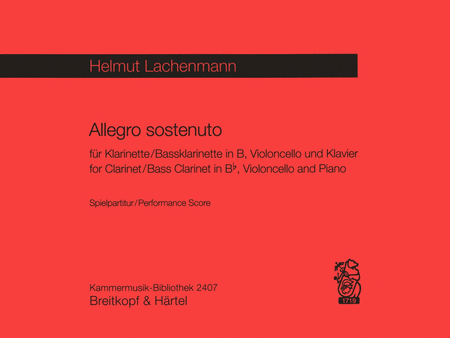
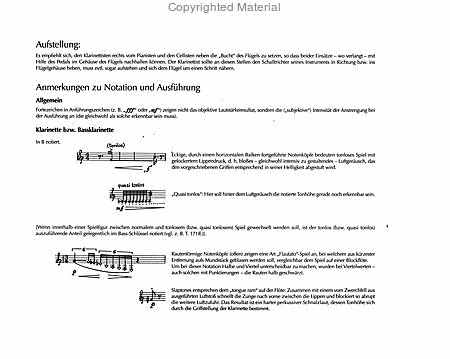
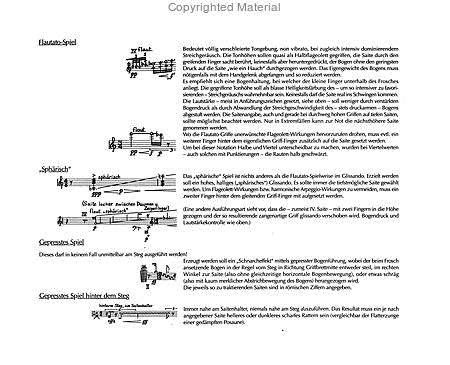
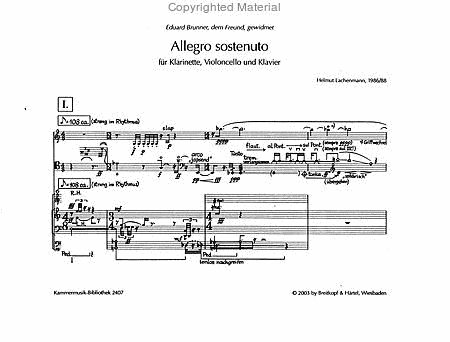
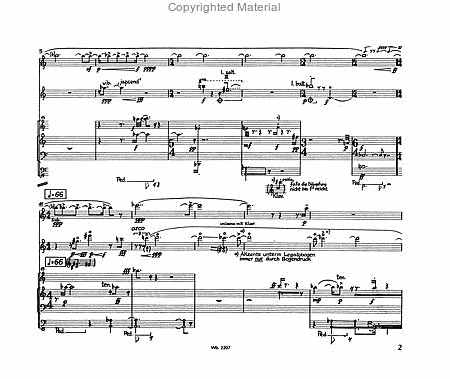
 Share
Share